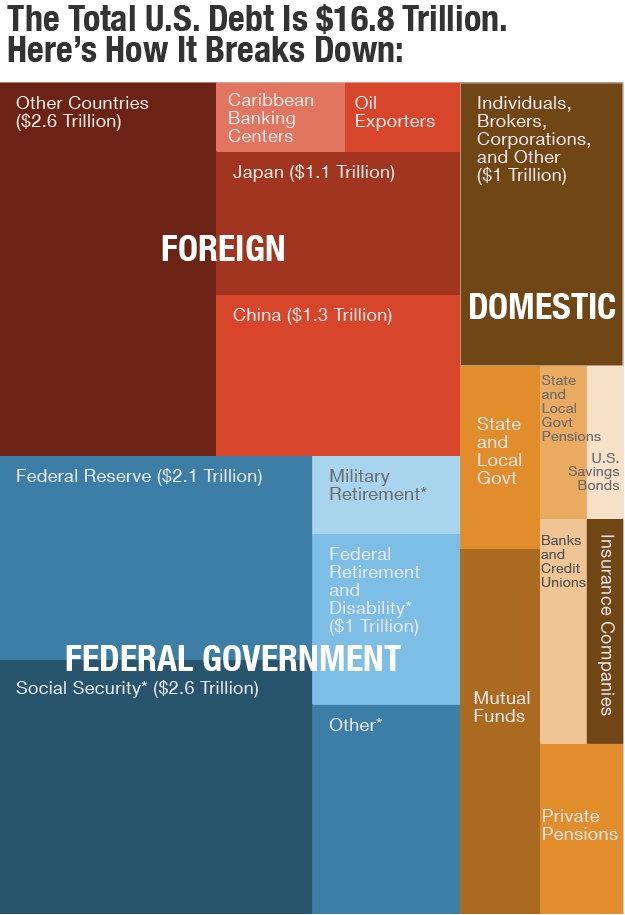5 Reasons Why the US Won’t Default On Its Debt
1) The Federal Reserve will more than likely continue to monetize the debt if and when it can in the form of purchasing and then selling treasury bonds. The philosophy of the Bernanke-led Fed will likely continue with Janet Yellen as the new Fed chairman (“She’s just more of the same,” says Ron Paul.) Of course, the debt ceiling places limits on such issuance of debt (in this case, bonds), but laws and the constitution haven’t stood much in the way of the Fed’s caprice either.
2) The big-time credit-rating agency Moody’s released a memo on Oct. 7th that stated:
We believe the government would continue to pay interest and principal on its debt even in the event that the debt limit is not raised, leaving its creditworthiness intact. The debt limit restricts government expenditures to the amount of its incoming revenues; it does not prohibit the government from servicing its debt. There is no direct connection between the debt limit (actually the exhaustion of the Treasury’s extraordinary measures to raise funds) and a default.
The memo also went on to remark that “the budget deficit was considerably larger in 2011 than it is currently, so the magnitude of the necessary spending cuts needed after 17 October is lower now than it was then.”
3) A large chunk of the US national debt is owed to the Federal Reserve. During the debt ceiling debate of 2011, then-congressman Ron Paul recommended that the Federal Reserve Board destroy the $1.6 trillion (now $2.1 trillion) in government bonds it was holding. Unlike the debt held by Social Security, the debt held by the Fed is not tied to any specific obligations.To be sure, there would be consequences to the Fed destroying these bonds. The Fed has long planned to sell off the bonds in order to absorb reserves that it had pumped into the banking system when it originally purchased the bonds. This would either result in inflation or another credit crunch, depending on what the Fed would decide to do with reserve requirements.
4) An even larger chunk of the US national debt is owed to itself. These include Social Security and Federal Retirement and Disability Benefits. We like to think of spending towards these programs as non-discretionary, however, even these are not invulnerable to being shifted forward (i.e. raising the social security age of entitlement to 66, 67, and so on) and will be adjusted sooner or later lest these programs and the interest on their debt begin to take up 80+% of the budget.
5) The US has been there before and averted disaster. Following WWII, federal debt levels reached 121.7% of GDP without default as an outcome. Currently the US federal debt to GDP is around 100%. Numerous other countries have reached much higher percentages without resorting to default, although economic deterioration or inflation is known to attach itself to sustained debt-to-GDP ratios above 80%.

